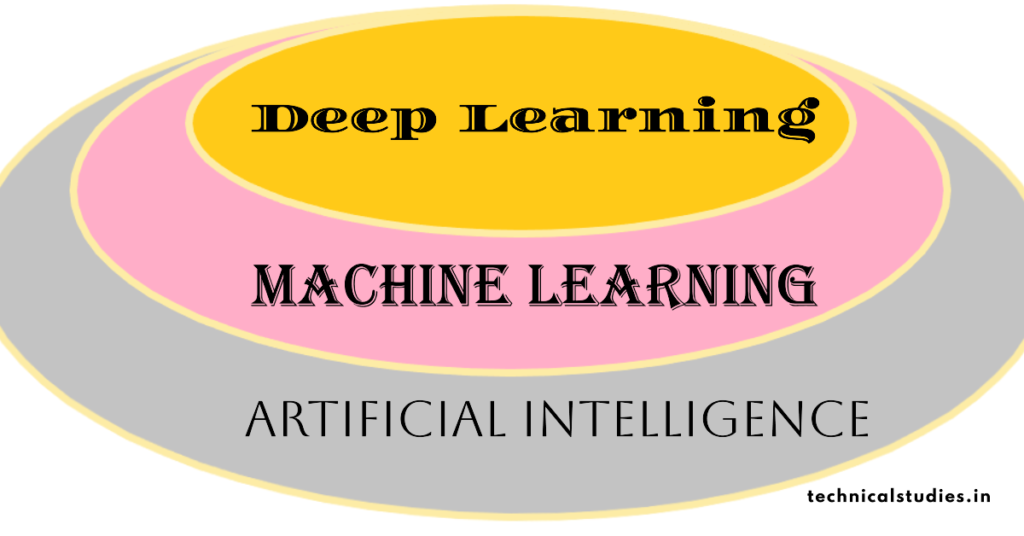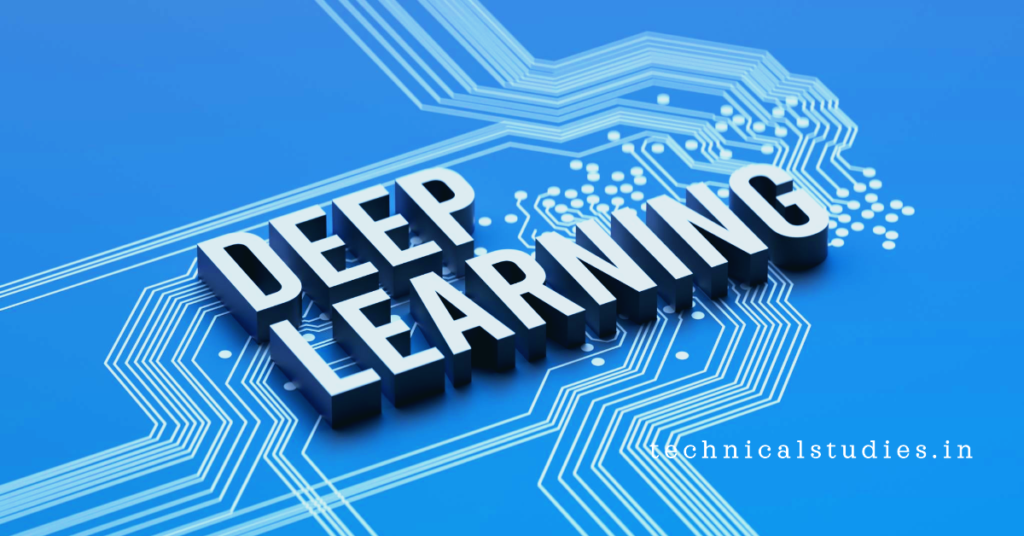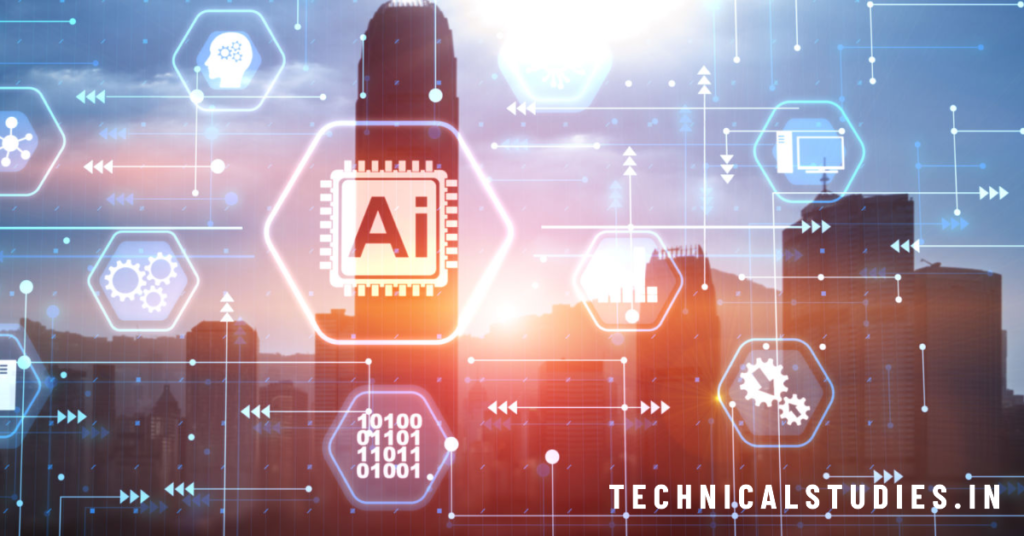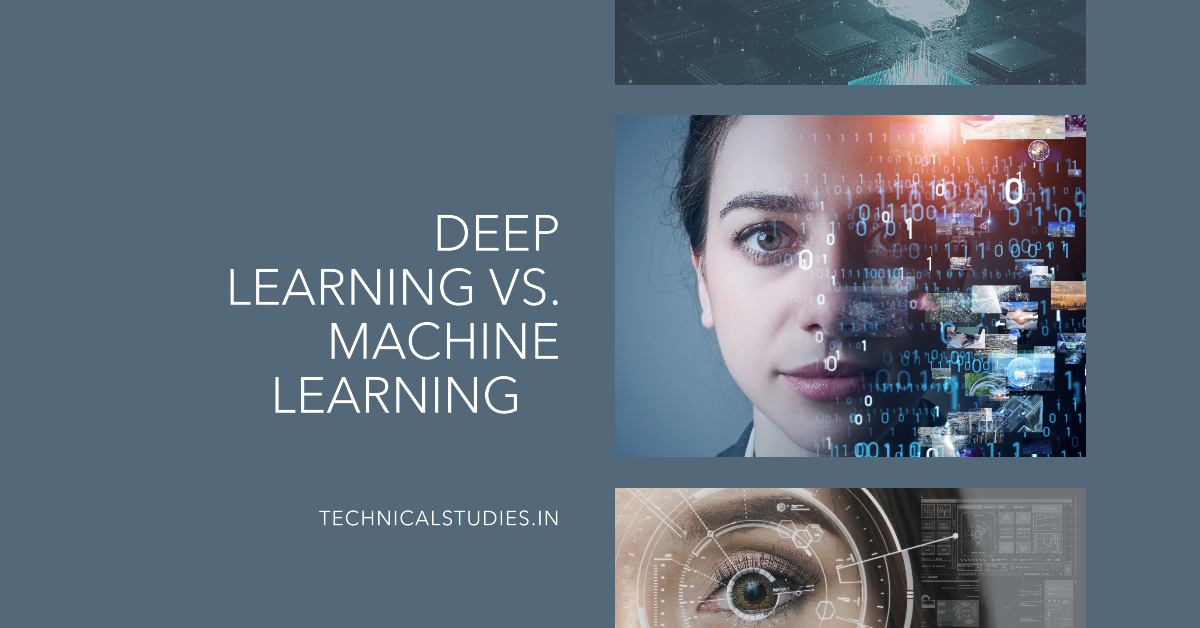This article explains deep learning and machine learning and tries to figure out some key differences between them.
Deep learning and machine learning are two buzzing terms in the world of AI, and most people think that they are replaceable. But this is not true. Therefore, one should understand deep learning, machine learning, and their differences to understand the function of AI.
In short, deep learning is a subset of machine learning, and machine learning is a subset of artificial intelligence. They are interconnected with each other in the field of AI.
So, when someone thinks about deep learning vs. machine learning, it refers to the specialty of deep learning, which makes it a step more advanced than machine learning. It also states that deep learning helps overcome the limitations of machine learning.
Let’s now start our discussion of deep learning vs. machine learning, which covers the basics of both, their differences, and what limitations of machine learning encouraged the evolution of deep learning.
Before that, let’s have a look at this visual representation of AI consisting of both deep learning and machine learning for a better understanding of the subject.

Are you looking to learn deep learning and build a career in this field? Check out this article on the best deep learning courses online. Also, this article on the best machine learning courses online will help you understand machine learning better.
Deep Learning Vs Machine Learning: What is The Difference?
What Is Deep Learning?

As stated above, deep learning is a subfield of machine learning that uses artificial neural networks to process data, just like the human brain. It is a more sophisticated and complex model of machine learning that can solve complex problems.
Deep learning models are able to understand complex data structures, including text, images, sounds, etc., and make predictions depending on that data. It is used in a wide range of applications, such as speech recognition, computer vision, natural network processing, and more.
What sets deep learning apart from machine learning is its ability to learn on its own from data over time. As a result, it can process more data and produce more accurate results. This makes deep learning a perfect choice for automation or tasks where human interaction needs to be reduced.
Deep learning models consist of multiple layers of neural networks, which justify the term deep learning.
What Is the Importance of Deep Learning?
What artificial intelligence does is teach computers to think, learn, and perform tasks like humans. Deep learning is a technology in the field of artificial intelligence that makes this possible with the help of artificial neural networks.
It is used in various tasks such as fraud detection, complex pattern recognition, self-driving cars, transfer learning, creativity projects, etc. Deep learning can process millions of data points, analyze them, and make predictions based on the input data. Therefore, deep learning is crucial for modern technologies and businesses.
What Is Machine Learning?
Machine learning is a captivating subset of artificial intelligence that develops algorithms to let computer systems perform certain tasks without direct programming. By using machine learning algorithms, computer systems analyze large sets of data, determine data patterns, and predict the accurate output.
For instance, data scientists can train a finance application to predict market conditions using the historical data of stocks. Such applications can also be found in other fields, such as healthcare, education, manufacturing, retail, entertainment, etc.
Types Of Machine Learning
Depending on the data used to train a machine learning model, machine learning is divided into two types – supervised learning and unsupervised learning.
Supervised learning is a method that uses labeled training data to produce accurate results. This can be understood by an example of training an application to predict house prices on the basis of location, area, number of floors, number of bedrooms, etc.
On the other hand, unsupervised learning is a method that uses unlabeled data to identify patterns grouping similar items in the dataset.
In addition to these two types of machine learning, there are also semi-supervised and reinforcement machine learning models available.
The work of semi-supervised machine learning lies between supervised and unsupervised learning, and it uses both labeled and unlabeled data. This technique is used when a small part of the dataset is labeled, and the rest is unlabeled.
Reinforcement learning is a method that interacts with an environment, taking an action that can produce a reward or error. Over time, the machine learns from its experiences. In short, it can be represented with a feedback system. An example of reinforcement learning can be teaching an AI agent to play games.

What Is the Importance of Machine Learning?
Machine learning has significance in various fields, helping businesses grow by solving complex problems. Traditionally, businesses used to collect data from various sources, analyze that, and make decisions depending on the input data.
But with machine learning, this process is fully optimized. Machine learning algorithms analyze large amounts of data at higher speeds, helping businesses make decisions faster.
Apart from that, machine learning makes computers learn from their experiences, which improves over time. Machine learning models find their applications in a wide range of fields, such as finance, healthcare, gaming, marketing, cybersecurity, social media, infrastructure, transportation, etc.
Deep Learning Vs Machine Learning: A Detailed Comparison in A Tabular View
Till now, I explained the definitions and importance of deep learning and machine learning. Let’s now compare these two techniques side by side.
| Points | Machine Learning | Deep Learning |
| Overview | Machine learning is a branch of artificial intelligence that uses algorithms to process data and predict outcomes based on the input. | Deep learning is a method of artificial intelligence and an advanced form of machine learning. |
| Training Process | Manual action is needed to train machine learning models. | Deep learning models self-learn from their previous mistakes and improve over time. |
| Purpose | Machine learning is perfect for handling labeled and structured data. | Deep learning is perfect for handling unstructured data and performing complex tasks. |
| Execution Time | ML models take less time to train | DL models take a long time to train as it involves multiple layers. |
| Hardware Requirements | Machine learning systems are simpler than deep learning, so they can work on normal computers. | DL systems contain multiple layers of networks and conduct a huge number of matrix multiplication operations, which require high-end machines to execute. A GPU is required to conduct these operations. |
| Input | Machine learning models require a small amount of data to predict the next action. It can perform with thousands of data points. | DL models require millions of data points to make predictions. |
| Output | Outputs of ML systems are typically numeric values such as a score or a classification. | DL systems outputs can be in multiple formats such as text, number, or sound. |
| Simplicity | Machine learning models are simpler, and their results are easy to understand and explain. | Deep learning models are more complex than ML models, and their results are difficult to explain. |
| Uses | Machine learning is used in a wide range of applications such as healthcare, financial services, entertainment, etc. | Deep learning is suitable for solving complex issues, for example, natural language processing, automation, speech recognition, etc. |
Key Differences Between Deep Learning and Machine Learning
Deep learning is a phenomenal subset of machine learning or an advanced machine learning technique that requires more resources than machine learning to execute. In this section, we will consider the differences between deep learning and machine learning based on the resources they use or the techniques they follow. So, let’s start now.
Purpose
When you are in doubt about whether to use deep learning or machine learning for your task, you can decide on the right technique by understanding their core purposes.
Machine learning is a technique that works well with structured data. It can recognize patterns in such datasets and predict outcomes. A real-life example of machine learning can be recommending similar products or services to customers based on their shopping history or search history.
On the other hand, deep learning works well with unstructured or unlabeled data. It identifies relationships or patterns in objects in big data sets using deep neural networks. It possesses techniques like natural language processing and image recognition to perform such tasks.
Some real-life examples of deep learning are identifying pedestrians and traffic signs in self-driving cars, targeting people in photos on social media, detecting tumors with images in the medical field, etc.
Training Methods
As I explained above, machine learning has four types of training methods, and those are supervised learning, unsupervised learning, semi-supervised learning, and reinforcement learning. In addition to this, it has two other learning methods – self-supervised learning and transfer learning.
Deep learning training methods are more complex compared to machine learning. It contains several training methods, such as convolutional neural networks, recurrent neural networks, generative adversarial networks, and autoencoders.
Human Intervention
Human intervention is a crucial part of both machine learning and deep learning models. In both cases, an engineer has to define a problem, make ready a data set, train a model, evaluate and optimize the outcomes, and establish a solution. The only difference for this point is that human involvement can be less or more.
For instance, machine learning models are easier to interpret due to their simplicity. Eventually, it also needs human involvement to carry out every step required to perform a task.
On the other hand, deep learning models require more time to analyze data as the data has to pass through multiple layers. Also, it performs complex mathematical calculations, adding more time to the process.
Another thing to note is that deep neural networks have self-learning capabilities, eliminating the data labeling task of humans. Human intervention can further be reduced with pre-trained platforms and models.
With this, it is safe to say that deep learning needs less human intervention compared to machine learning.
Problem-Solving Strategy
Both deep learning and machine learning follow a technique called feature engineering to extract features from raw data and allocate weights to them. In machine learning, this process is done by humans.
However, deep learning does this with reduced human involvement. The architecture of deep learning models is complex like the human brain, and instead of neurons, it has nodes. Basically, there are three or more layers – an input layer, an output layer, and hidden layers.
In a deep neural network, nodes automatically assign weights to features, reducing human intervention. It passes data from input to output through multiple layers where several operations occur, and then the output appears on the output layer.
This way, deep learning models do more operations with data compared to machine learning.
Performance
Both deep learning and machine learning provide phenomenal performance in tasks they are intended to use. For instance, machine learning models perform extremely well in doing simple data clustering or recommendation tasks and even beat deep learning.
On the other hand, deep learning does complex tasks like image recognition effectively, beating machine learning. Therefore, both techniques do an excellent job performance-wise.
Resource Requirements
Deep learning requires more resources compared to machine learning due to a large number of data sets and complex architecture. They require extended storage space, more computational power, high-performance clusters, and other resources.
Due to this, a deep learning infrastructure costs more than machine learning. Even it may not be cost-effective for businesses to create in-house deep learning solutions. Instead, you can use fully managed and scalable deep learning infrastructures for your projects.
On the other hand, machine learning has a simple architecture and can run on a normal system or server cluster.
How Does Deep Learning Work?
Deep learning models have a complex structure like the human brain. Just like the human brain, they have millions of neurons connected to each other to learn and process data. These are artificial neurons and are also called nodes.
Deep neural networks or artificial neural networks use these nodes to solve complex problems in businesses and other fields.
How Does Machine Learning Work?
Machine learning is a method that finds the mathematical relationship between input and output. When it is given with enough data, it performs mathematical calculations and predicts the outcome.
The machine learning principle believes that all data points in complex data sets are mathematically linked in computer systems as long as there is enough data to process. The working of machine learning can be understood as follows:
- Humans train machine learning algorithms by providing input and output data sets.
- Then, the algorithm does mathematical operations to identify the relationship between input and output.
- Once the algorithm is trained, we can give a random input and ask to predict an output for that.
- The trained algorithm can now automatically determine what the output will be.
Limitations Of Machine Learning
As I explained above, feature learning is where machine learning requires humans to extract features from a set of data. For instance, to classify a set of animal images, an engineer has to indicate some features of animals, such as nose shapes, eye shapes, facial outlines, etc. Based on this, a machine learning algorithm can organize these images.
However, this is reduced with deep learning as deep neural networks can learn from their own experiences and organize data in each layer of the network.
Previously, deep learning was not in use due to its huge demand for resources and data sets, which leads to increased costs. However, over the last 20 years, the circumstances have improved, making deep learning operable commercially.
Benefits Of Deep Learning Over Machine Learning
Till now, we have discussed the differences between deep learning and machine learning and figured out that deep learning is more advanced compared to machine learning. Let’s now discuss some of the benefits that deep learning offers over machine learning.
Processes Unstructured Data Effectively
One of the top challenges of machine learning is processing unstructured data because such data sets usually have multiple inequalities. However, deep learning can work with such data sets with minimal manual intervention.
Recognizes Hidden Patterns and Relationships in Data
Another advantage of deep learning algorithms is that they can make further predictions for what they have trained. For instance, if you train a deep learning model to analyze the number of subscriptions for an online service or platform with the customer subscription data.
The deep learning model will provide the exact thing you need. Additionally, it will identify hidden patterns in your data and predict what improvements or additions you can make to get better results in your business.
Processes Volatile Data
With the help of deep learning, volatile data can also be analyzed efficiently. One example of volatile data can be loan repayment calculations in banks. A deep learning model can learn these data patterns and categorize them, such as safe loans, unsafe loans, NPAs, etc.
Enhanced Unsupervised Learning
Unsupervised learning is a training method of machine learning that deals with unlabeled data. With deep learning, this can be done in an enhanced way, and DL learns and gets better over time using its own experience.
For example, if a deep learning model is trained to check the spelling of English words, it can also correct the spelling of other-language words by learning from your typing patterns.
Handles Complex and Large Data
Another benefit of deep learning is it can handle complex and large data sets efficiently, which can overburden machine learning algorithms. With deep learning, you can get insightful results from large data sets.
Similarities Between Deep Learning and Machine Learning
So far, we have understood the basics of deep learning and machine learning, and the differences between them. But both belong to artificial intelligence and use similar concepts.
Even both techniques are used in similar applications such as image recognition, decision-making, problem-solving, etc.
Here, I have listed some of the commonalities between deep learning and machine learning.
Both Are Part of Artificial Intelligence
As we all know, deep learning is a subset of machine learning, and machine learning is a branch of artificial intelligence. Their functionalities are similar with different capabilities.
Need Large Data Sets
Both deep learning and machine learning require large data sets (labeled or unlabeled) to perform mathematical operations. For instance, machine learning can function with 50 to 100 data points, while deep learning starts with thousands of data points.
Use Statistical Methods
Statistical methods are common in both deep learning and machine learning. Both DL and ML engineers understand statistics to train algorithms well. Some statistical methods used in both include decision trees, calculus, linear algebra, and regression analysis.
Require Computational Power
Computational power is a common requirement for both deep learning and machine learning models for training and processing data. Compared to machine learning, deep learning requires more computational power due to its complex architecture.
Used In a Wide Range of Applications
Undoubtedly, deep learning and machine learning are widely popular in the tech industry and used in various fields to solve complex problems. Without these techniques, it could take remarkable time to solve these problems using traditional methods.
Improve With Time
Both deep learning and machine learning models get better day by day as they consume more data. They consider every input as a data point and train themselves to provide optimized results.

Use Cases of Deep Learning
Deep learning is a versatile problem-solving technique and is used in a wide range of applications such as electronics, manufacturing, automotive, aerospace, medical science, defense, etc.
Below, I have listed some of the popular applications of deep learning that you need to know.
Computer Vision
One of the prominent applications of deep learning is it is used in the field of computer vision to analyze images and perform the necessary tasks. Computer vision is a field within artificial intelligence that uses the ability of computers to obtain insightful information from images and videos, which can be useful in different applications.
- Deep learning can analyze the input images and classify them depending on the requirement. This is useful in applications like self-driving cars, medical image analysis, artwork analysis, etc.
- Deep learning algorithms can recognize objects within images, which makes it ideal for object tracking and detection applications such as face recognition.
Natural Language Processing
Natural language processing or NLP is another top application of deep learning algorithms. This makes it easier to understand natural language data such as texts, documents, verbal data, etc.
After processing this human-generated data, it can be used for a wide range of applications such as language generation, speaker identification from voice, analyzing long-form documents in businesses, and creating automated virtual agents or chatbots.
Fraud Detection
Deep learning algorithms are a great choice for detecting fraud in any transaction or system. It analyzes the input data and finds any anomalies in the dataset. This plays a crucial role in insurance companies, financial institutions, e-commerce platforms, etc.
Recommendation Systems
Deep learning models can be used in recommendation engines to give personalized recommendations to customers. It understands the behavior and preferences of users and helps them find the perfect product or service on the platform. Amazon, Netflix, Flipkart, and other such companies use deep learning for this purpose.
Speech Recognition
Speech recognition is another leading application of deep learning that helps analyze human speech. Although human speech has multiple variations, the ability to recognize patterns and perform the necessary tasks makes deep learning a popular choice for this application. Amazon Alexa, Google Assistant, and Siri are some examples of speech recognition.
Predictive Analytics
Deep learning methods can also be used for predictive tasks to get future outcomes from historical data sets. Some applications can be weather forecasting, stock market predictions, customer behavior analysis, etc.
Autonomous Vehicles
Deep learning is used in autonomous vehicles, such as self-driving cars, for the purpose of perception. It helps recognize traffic signs, pedestrians, other vehicles, etc. while driving.
Use Cases of Machine Learning
Just like deep learning, machine learning is also used in a wide variety of applications in different fields. In other words, we can say that all applications of deep learning are of machine learning as deep learning is a subset of machine learning. However, here I listed some of the applications of machine learning.
Finance
In the field of finance, machine learning helps identify risks and strengthen security. For instance, it is used in banks to identify fraud in credit cards and loans by analyzing the behavior of users.
In addition to that, it is used in the stock market to analyze people’s sentiments and predict market fluctuations depending on which accurate trading decisions can be taken.
Marketing
Machine learning can be used to make marketing jobs in a smarter way. It will analyze customer demographics, behavior, and preferences and then provide recommendations for products and services as per their interests.
Healthcare Industry
The healthcare industry uses machine learning to process critical information about patients and help doctors provide appropriate diagnoses or treatments.
With the increase of wearable devices, machine learning has become a crucial part of the healthcare industry as it helps process a large amount of data. Some tasks that machine learning does in this field include medical image analysis, drug discovery, and predicting patient outcomes.
Transportation Industry
machine learning is also used in the transportation industry to help logistic companies optimize delivery routes. Also, it can be used to predict the maintenance time of vehicles.
Cybersecurity
Another remarkable use of machine learning is in the field of cybersecurity. It helps in facial recognition to make the authentication process secure and detects and blocks malware in the system.
Retail and e-Commerce
In the retail sector, machine learning helps manage inventory, cross-channel marketing, upselling, and enhancing customer service. It helps demand and supply in real-time and incorporates a recommendation system to enhance customer experience.
An example of this can be e-commerce platforms such as Amazon, Flipkart, Walmart, etc.
Smartphones
All of us use machine learning in our daily lives as it is used in smartphones for face unlocking, email filtering, and voice assistant models.
Media And Entertainment
Machine learning is used by entertainment and media companies to learn about their target audience and deliver appropriate content to them. By knowing their audience better, they are able to provide personalized content as per the demand.
It also helps in designing trailers and advertisements and streamlining the production process.
Manufacturing
In the manufacturing sector, machine learning helps streamline multiple tasks. It is helpful for quality control, predictive maintenance, unique product research, logistics, supply chain, inventory management, etc.
Future Trends of Deep Learning and Machine Learning
Both deep learning and machine learning are popular in the field of artificial intelligence and can transform many sectors, such as finance, healthcare, transportation, retail, marketing, etc.
Both technologies will continue to evolve in the future. Let’s now discuss the prospects of both deep learning and machine learning.
Future Trends of Deep Learning
Currently, deep learning is a powerful AI technology that is used in a wide range of applications. We can say that it is an omnipresent technology used in computer vision, natural language processing, fraud detection, etc. Businesses leverage the power of deep learning to enhance both technical and financial results.
Unsupervised learning methods may improve with time and behave like humans. These can revolutionize the new AI systems and enhance the performance of different industries.
Apart from that, the concept of hybrid models is also under development, which contains deep learning and other techniques to enhance the capabilities of the system.
The field of natural language processing will also evolve in the future, delivering more accurate results.
Future Trends of Machine Learning
Just like deep learning, machine learning also has a bright future and will continue to evolve in the future. For example, the quantum computing effect is a new technology in this field that will optimize the speed of machine learning algorithms and enhance their performance.
Explainable AI or XAI is another term in the field of AI that helps make machine learning models accountable, interpretable, and transparent so that they can be trusted and used properly.
Reinforcement learning is a training method in machine learning that focuses on an environment and learns from trial and error. This is going to evolve in the future and help in various areas such as gaming, robotics, autonomous systems, and other dynamic environments.
Human-in-the-loop machine learning is another practice that combines machine and human intelligence to create highly efficient machine learning algorithms. In this system, humans guide the training process via iterative feedback loops to improve accuracy.
Apart from the above examples, several developments are happening in the field of machine learning, which are going to manifest in the future.
Conclusion
Both deep learning and machine learning belong to artificial intelligence, while deep learning is still a new term in several areas. Due to its huge cost and complexity, only large companies are able to adopt this technology. But this is now changing with the help of scalable, cloud-based deep learning solutions.
Are you willing to learn deep learning or machine learning to enhance your skills in this field? Check out our articles on the best deep learning courses and best machine learning courses.
Have you found this article interesting? Consider sharing it with your friends and colleagues.
FAQ
What is the difference between deep learning and artificial intelligence?
Artificial intelligence is a field or technology that injects human-like intelligence into machines. It creates systems or algorithms with self-correcting capabilities to perform tasks that require human intelligence.
On the other hand, deep learning is a subfield of machine learning, which is a subfield of artificial intelligence, that uses artificial neural networks to function like the human brain. All deep learning is artificial intelligence, but all AIs are not deep learning.
Is deep learning more powerful than machine learning?
First of all, both DL and ML are suitable for different purposes, so one may be more powerful than the other in performing some tasks. So, saying one is more powerful than the other universally is not correct.
What is an example of deep learning?
Deep learning is used in a wide range of applications, so you can see real-time examples of deep learning in healthcare, natural language processing, agriculture, finance, etc. One example can be banks using deep learning models to analyze transaction behavior to identify frauds.
Is deep learning harder than machine learning?
Machine learning models are simple to understand and incorporate, making them suitable for beginners to learn. On the other hand, deep learning models are complex due to artificial neural networks, so they are difficult to learn.
What is NLP?
NLP stands for natural language processing, which is a captivating field in computer science that enables machines to learn and generate human language. These systems use computational linguistics with statistical and machine learning models to recognize and understand text and speech.
Related Articles
